Astronomical Paris
Posted by John Baez
Today is my last day in Paris. With any luck, I’ll meet David Corfield in Delphi tomorrow.
As a kind of followup to my post on mathematical Paris, here is a tour of the Paris Observatory.
On July 16th I met the mathematical physicist Joseph Kouneiher, who promised me a tour of the old observatory in Paris, to be led by his friend Cécile Barbachoux.
I also met his colleague Frédéric Hélein, who has an organ in his office (!) and played some Bach on it for us. They have written a fascinating paper comparing two approaches to multisymplectic geometry, which is a kind of generalization of the usual geometrical description of classical mechanics from particle to strings and higher-dimensional branes. I had read Rovelli’s work on this, and I’ve given some lectures on how it might let us "categorify" classical mechanics, but I hadn’t known the rich history and the amount of work that’s been done on this subject! I’m very excited by this.
The next day Lisa and I went on the promised tour of L’Observatoire de Paris. I’d been a bit confused, mistaking the rusty green observatory near the Pantheon with the real thing — the main old observatory in Paris, on Avenue Denfert-Rochereau.
I forgot my camera, so all the pictures that follow were taken by Lisa.
We met the astrophysicist Cécile Barbachoux at the entrance of what seemed like a typical dull modern office. She then led us through it into a wonderful world full of gardens and old buildings.
The first thing we saw were these stables:
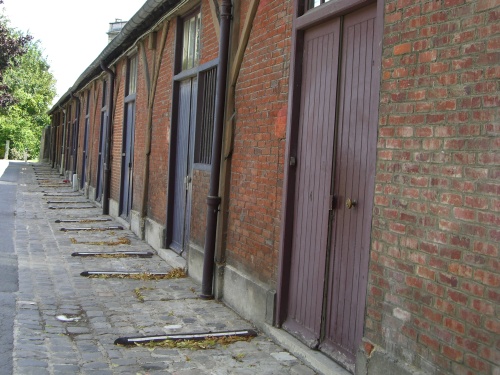
They’re now used as rooms for constructing astronomical equipment, but the observatory was constructed at the behest of Louis the Fourteenth, starting around 1667, when horses were very much the thing.
We then walked past some gardens and came to the house where the director of the observatory lives:
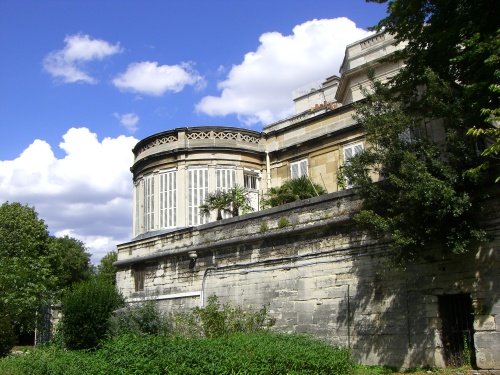
Note the spooky dark doorway below — there are many secret passages, stairways, and underground laboratories here!
The first director of the observatory was Giovanni Domenico Cassini, who apparently lived in this location before the observatory was even built. He’s famous for discovering the first 4 moons of Saturn, the Cassini division in Saturn’s rings, the Great Red Spot of Jupiter, and so on.
Rounding the bend we came to the grand entrance and saw a big statue of Urbain Le Verrier, who was director from 1873 to 1877. Le Verrier specialized in celestial mechanics, and used perturbations in the orbit of Uranus to predict the location of Neptune.
Even more interesting to me was this plaque:
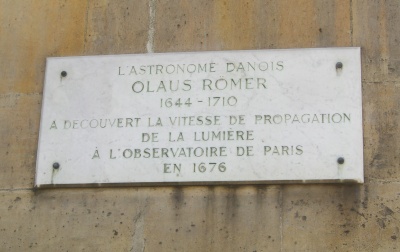
Here is where Ole Rømer measured the speed of light in 1676! — with the help of Christiaan Huygens, and the shadow of Jupiter’s moon Io. As someone fascinated by relativity, the first measurement of something so important as "la vitesse de propagation de la lumière" has always seemed very exciting to me.
Inside the observatory, Cécile used her specially procured ring of keys to open various secret doors and show us wonders starting with Foucault’s telescope, which is made of wood:
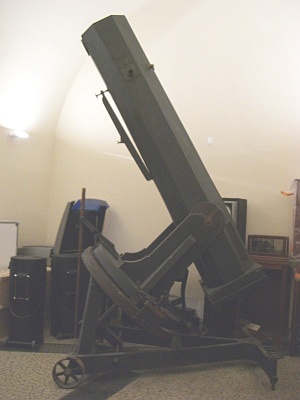
Léon Foucault is more famous for his pendulum, which he used to demonstrate the rotation of the Earth. In fact, every scientist in Paris received an invitation to L’Observatoire de Paris to see this pendulum on February 3rd, 1851. Napoleon III later created a post of Physicist Attached to the Imperial Observatory specially for Foucault, during the time Le Verrier was director, and this is when Foucault began making telescopes.
We then ascended many flights of stairs until we reached the roof:

where we saw a marvelous view of Paris.
We scrambled over the roof and entered the observatory proper:
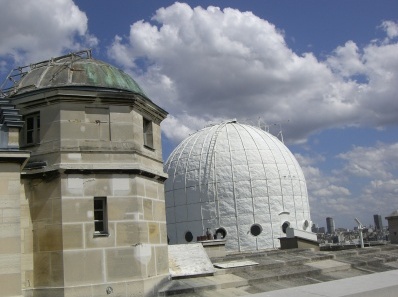
Inside, it was very dark, and dominated by a huge telescope:
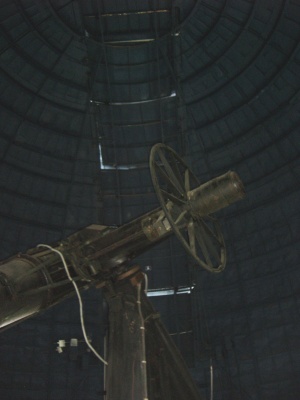
Apparently this old telescope is still used in some demonstrations, just for fun — but nowadays, even a small modern telescope can do better.
We then descended a small spiral staircase, getting a nice view of the steel reinforcements that support the heavy telescope, and eventually worked our way to the library. Here we saw many more nice old telescopes:
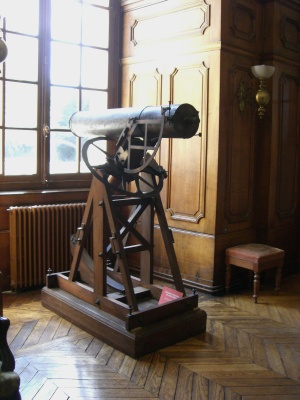
We also saw sextants, globes, celestial spheres, heliostats, and other curiosities — for example, a marble statue of Cassini, as well as this one of Laplace:
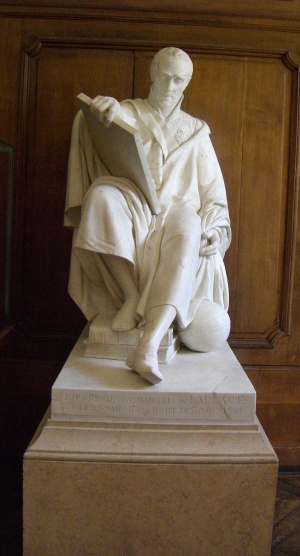
The celestial sphere at his feet is a nice classical allusion: it reminds me of a statue of Athena in the Louvre, where she is for some reason holding such a sphere, more typically the property of Urania.
Pierre-Simon Laplace is now most famous for his work on probability theory, celestial mechanics and the like, but he also directed L’Observatoire de Paris. The astronomer Delambre later wrote:
… never should one put a geometer at the head of an observatory; he will neglect all the observations except those needed for his formulas.
This could equally well have been said about Hamilton, who also lived in an observatory, and made his wife do most of the observations!
Cécile then took us to her office. To reach her office, she needs to climb yet another twisty little spiral staircase — the place is full of them. I find it very romantic, but I wonder how many aging astronomers have plunged to their deaths here.
She showed us this astrolabe:
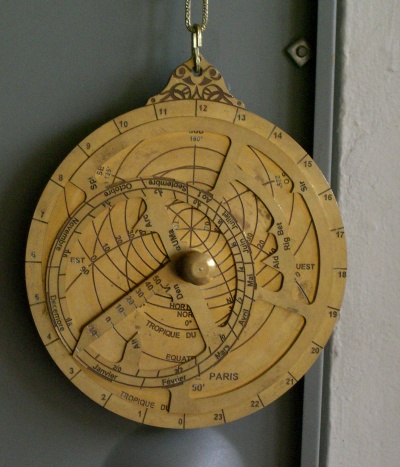
This was made by a 16-year-old student as part of the observatory’s educational program! I don’t even know how to use an astrolabe, much less make one.
On our way out, we caught a nice view of some smaller observatories:
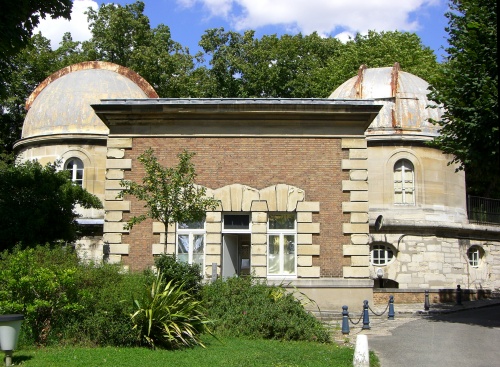
We then met Joseph Kouneiher and went to a café. Much to my surprise, Joseph told us that Leibniz had invented a calculating device, the stepped reckoner, in 1674. Two prototypes were built. One was lost in an attic of the University of Göttingen until a worker found it in 1879 — while fixing a leak in the roof! It’s now in the State Museum of Hanover.
A wonderful tour… and I’ll miss this town.

Re: Astronomical Paris
Thanks for this tour! I really enjoyed reading it.